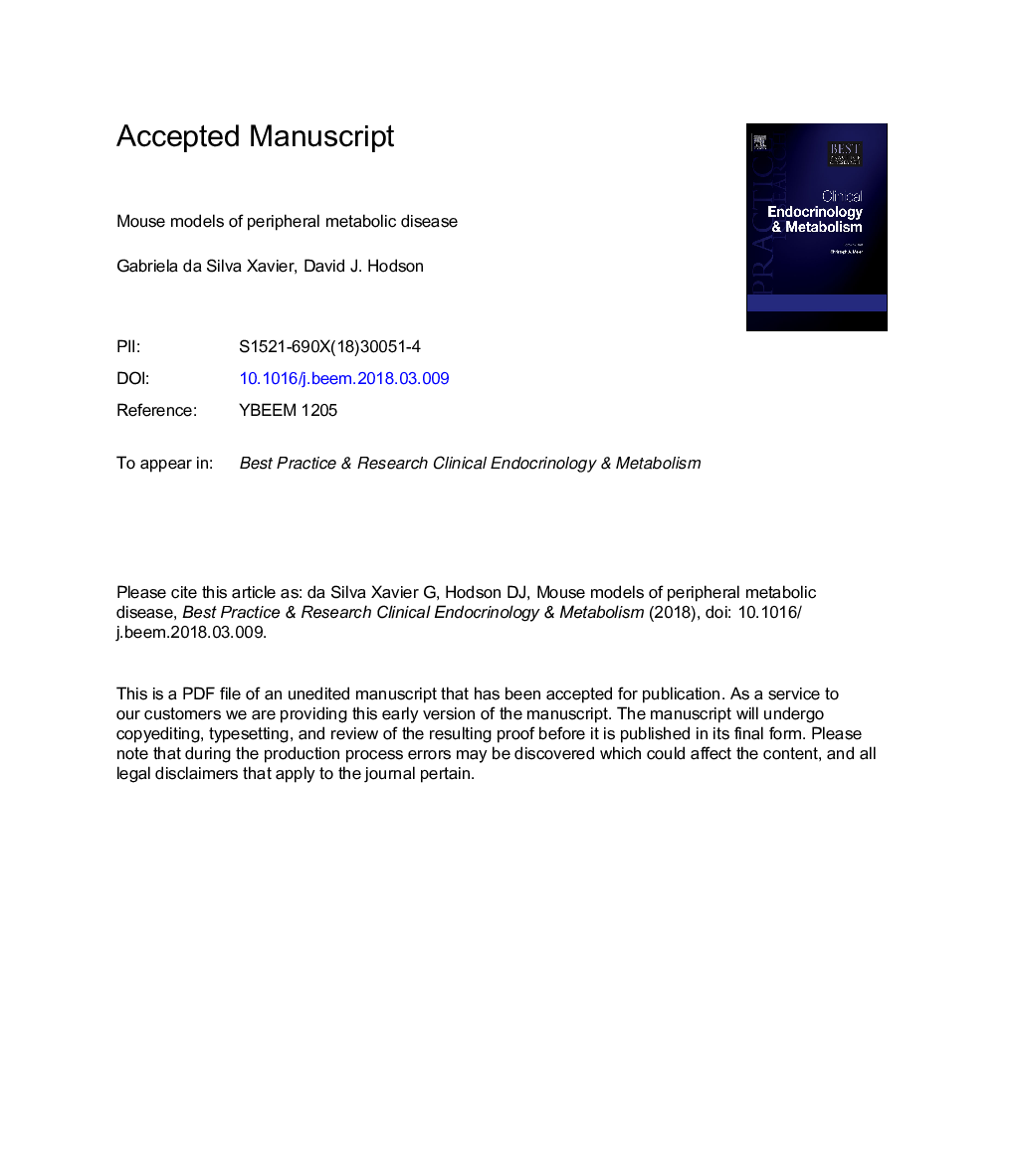| کد مقاله | کد نشریه | سال انتشار | مقاله انگلیسی | نسخه تمام متن |
|---|---|---|---|---|
| 8627326 | 1568654 | 2018 | 42 صفحه PDF | دانلود رایگان |
عنوان انگلیسی مقاله ISI
Mouse models of peripheral metabolic disease
ترجمه فارسی عنوان
مدل موش بیماری متابولیک محیطی
دانلود مقاله + سفارش ترجمه
دانلود مقاله ISI انگلیسی
رایگان برای ایرانیان
کلمات کلیدی
ماوس، متابولیسم چاقی، دیابت، مقاومت به انسولین،
موضوعات مرتبط
علوم زیستی و بیوفناوری
بیوشیمی، ژنتیک و زیست شناسی مولکولی
علوم غدد
چکیده انگلیسی
Metabolic disease risk is driven by defects in the function of cells that regulate energy homeostasis, as well as altered communication between the different tissues or organs that these cells occupy. Thus, it is desirable to use model organisms to understand the contribution of different cells, tissues and organs to metabolism. Mice are widely used for metabolic research, since well-characterised mouse strains (in terms of their genotype and phenotype) allow comparative studies and human disease modelling. Such research involves strains containing spontaneous mutations that lead to obesity and diabetes, surgically- and chemically-induced models, those that are secondary to caloric excess, genetic mutants created by transgenesis and gene knockout technologies, and peripheral models generated by Cre-Lox or CRISPR/Cas9 approaches. Focussing on obesity and type 2 diabetes as relevant metabolic diseases, we systematically review each of these models, discussing their use, limitations, and future potential.
ناشر
Database: Elsevier - ScienceDirect (ساینس دایرکت)
Journal: Best Practice & Research Clinical Endocrinology & Metabolism - Volume 32, Issue 3, June 2018, Pages 299-315
Journal: Best Practice & Research Clinical Endocrinology & Metabolism - Volume 32, Issue 3, June 2018, Pages 299-315
نویسندگان
Gabriela (Senior Lecturer), David J. (Professor of Cellular Metabolism),
